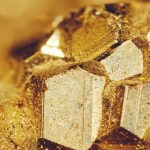The best automated precious metal investment metal insights
The Impact of 3D Printing on the Precious Metals Industry
The convergence of additive manufacturing and precious metals is revolutionizing industries from jewelry to aerospace. 3D printing precious metals is no longer a futuristic concept; it’s a tangible reality reshaping design possibilities, streamlining production, and offering sustainable solutions. According to a recent report, the precious metals materials market in additive manufacturing is projected to reach $250 million by 2028, signaling substantial growth and opportunity.
Understanding 3D Printing with Precious Metals
3D printing precious metals involves additive manufacturing of high-value materials like gold, silver, platinum, and their alloys to create intricate parts layer by layer. This method is gaining traction as designers and engineers seek complex geometries, reduced material waste, and cost-effective small-batch production. The history of metal additive manufacturing dates back to the 1980s, with processes evolving to handle precious metals in the 1990s.
There are two primary approaches to 3D printing precious metals:
- Direct Manufacturing: Creating parts directly from CAD files using technologies like Direct Metal Laser Sintering (DMLS) and Material Jetting.
- Indirect Manufacturing: Using 3D printing to produce tools like dies and molds for traditional processes, such as creating wax patterns for investment casting.
Technologies Used in 3D Printing Precious Metals
Several additive manufacturing technologies are employed for precious metals, each with unique advantages:
- Direct Metal Laser Sintering (DMLS): Uses a laser to sinter metal powder, ideal for intricate jewelry and dental implants.
- Selective Laser Melting (SLM): Fully melts powder for dense, void-free parts, preferred for aerospace and medical tools.
- Binder Jetting: Binds layers with a liquid adhesive, enabling rapid production of complex geometries at lower costs, suitable for decorative items.
- Material Jetting: Deposits droplets of molten metal for ultra-high-resolution components, such as microelectronics.
These technologies require precise control of temperature and inert gas environments to prevent oxidation, ensuring material integrity.
Advantages of 3D Printing Precious Metals
3D printing offers several advantages over traditional methods in the precious metals industry:
- Customization: Enables the creation of one-of-a-kind jewelry or patient-specific medical implants.
- Waste Reduction: Uses up to 90% less material than traditional methods.
- Complex Geometries: Produces lattice structures or hollow designs impossible with casting.
- Design Freedom: Allows internal lattices, organic shapes, and integrated features.
- Rapid Prototyping: Accelerates development cycles for wearable electronics and other applications.
- Cost Reduction: Reduces material costs, labor, and the need for extensive finishing.
Applications Across Industries
The impact of 3D printing on the precious metals industry spans various sectors:
- Jewelry: Creates intricate, custom designs, and enables mass customization.
- Electronics: Produces flexible circuit elements, RF devices, antennas, and PCBs.
- Medical: Fabricates biocompatible implants, crowns, bridges, and surgical tools.
- Aerospace: Develops corrosion-resistant turbine parts and high-temperature sensor housings.
- Automotive: Creates lightweight and stable automotive catalysts.
- Art and Sculpture: Allows artists to bring complex, detailed metal sculptures to life.
Challenges and Considerations
Despite its advantages, 3D printing precious metals faces certain challenges:
- Cost: Precious metal powders and specialized equipment can be expensive.
- Technical Barriers: High melting points require energy-intensive processes.
- Post-Processing: Labor-intensive finishing steps can offset time savings.
- Material Properties: Some metals, like gold and silver, are highly reflective and thermally conductive, making them difficult to melt thoroughly with typical AM lasers.
- Surface Finish: Achieving a smooth and shiny surface finish often requires significant post-processing.
The Future of 3D Printing in Precious Metals
The future of 3D printing in the precious metals industry is promising, with trends pointing towards:
- Increased Adoption: More industries recognizing the benefits of directly 3D printed precious metals.
- Technological Advancements: Improvements in printer performance, metal powders, and inks.
- Sustainability: Greater use of recycled gold and responsible sourcing.
- Mass Customization: Meeting the demand for personalized and unique products.
- Integration of AI: Using artificial intelligence to optimize designs and maximize material efficiency.
Strategic Advice
For businesses looking to leverage 3D printing in the precious metals industry, consider the following:
- Focus on Design: Design parts to optimize functionality while reducing material, time, and cost.
- Embrace Innovation: Challenge traditional norms and explore designs impossible to make with other techniques.
- Prioritize Sustainability: Utilize recycled materials and minimize waste to reduce environmental impact.
- Invest in Education: Train personnel to effectively use 3D printing technologies and software.
- Comply with Regulations: Ensure all processes and materials comply with current laws and regulations.
Conclusion
The impact of 3D printing on the precious metals industry is transformative. By embracing this technology, businesses can unlock new design possibilities, streamline production, and create sustainable solutions. As the market continues to grow and technology advances, 3D printing will play an increasingly vital role in shaping the future of precious metal manufacturing.




